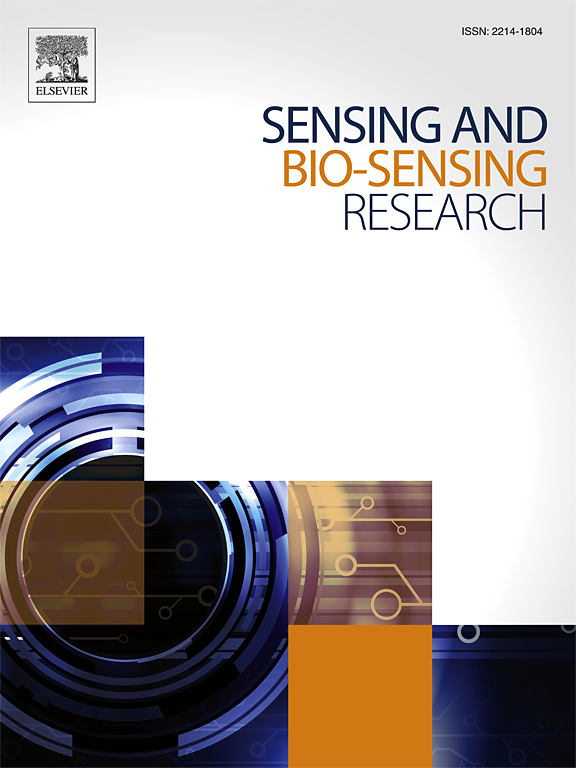A data ensemble-based approach for detecting vocal disorders using replicated acoustic biomarkers from electroglottography
IF 5.4
Q1 CHEMISTRY, ANALYTICAL
引用次数: 0
Abstract
Introduction
The relevant prevalence of voice-related pathologies underscores the need for robust computer-aided diagnostic (CAD) systems capable of supporting early detection and continuous monitoring. Electroglottography (EGG), a non-invasive technique measuring vocal fold contact area, has proven valuable in identifying and diagnosing vocal disorders.
Problem statement
Traditional diagnostic methods struggle with the dependent nature of EGG measurements within subjects, leading to challenges in managing within-subject variability and supporting multi-class classification.
Objectives
This study aims to design, implement, and evaluate two ensemble-based approaches that address the dependency in EGG measurements. The goal is to enhance the detection of vocal disorders by managing within-subject variability and facilitating multi-class classification.
Methods
The proposed methods utilize replicated acoustic biomarkers derived from EGG signals. Simulation-based experiments were conducted to assess the robustness and effectiveness of these methods. Additionally, experiments were performed using EGG signals from the Saarbrüecken Voice Database (SVD).
Results
Simulation results indicate that integrating replicated data improves accuracy rates compared to non-replicated models. Experiments on SVD demonstrated the robustness of the proposed methodology across different vowels in classifying healthy individuals, patients with laryngitis, and those with vocal fold paralysis.
Conclusion
The data ensemble-based approaches developed effectively manage the dependent nature of EGG measurements, enhancing the detection and classification of vocal disorders. These methods can be applied to other data types where replications play a key role. Future research should focus on collecting comprehensive EGG databases and further exploring multi-class classification methods to solidify EGG and machine learning as a valuable tool for non-invasive assessment of laryngeal function.
一种基于数据集合的方法,用于使用来自声门电图的复制声学生物标志物检测声带障碍
语音相关病理的相关流行强调了对强大的计算机辅助诊断(CAD)系统的需求,该系统能够支持早期发现和持续监测。声门电图(EGG)是一种测量声带接触面积的非侵入性技术,已被证明在识别和诊断声带疾病方面有价值。传统的诊断方法与受试者内EGG测量的依赖性作斗争,导致在管理受试者内可变性和支持多类分类方面面临挑战。本研究旨在设计、实施和评估两种基于集成的方法,以解决EGG测量中的依赖性。目标是通过管理主体内变异性和促进多类分类来增强对声乐障碍的检测。方法利用从卵细胞信号中提取的复制声学生物标志物。通过基于仿真的实验来评估这些方法的鲁棒性和有效性。此外,实验使用来自saarbr ecken语音数据库(SVD)的EGG信号进行。结果仿真结果表明,与非复制模型相比,集成复制数据提高了准确率。SVD实验证明了该方法在对健康个体、喉炎患者和声带麻痹患者进行不同元音分类时的稳健性。结论基于数据集成的方法有效地管理了EGG测量的依赖性,增强了对声带疾病的检测和分类。这些方法可以应用于复制起关键作用的其他数据类型。未来的研究应集中于收集全面的EGG数据库,并进一步探索多类别分类方法,以巩固EGG和机器学习作为喉功能无创评估的有价值工具。
本文章由计算机程序翻译,如有差异,请以英文原文为准。
求助全文
约1分钟内获得全文
求助全文
来源期刊

Sensing and Bio-Sensing Research
Engineering-Electrical and Electronic Engineering
CiteScore
10.70
自引率
3.80%
发文量
68
审稿时长
87 days
期刊介绍:
Sensing and Bio-Sensing Research is an open access journal dedicated to the research, design, development, and application of bio-sensing and sensing technologies. The editors will accept research papers, reviews, field trials, and validation studies that are of significant relevance. These submissions should describe new concepts, enhance understanding of the field, or offer insights into the practical application, manufacturing, and commercialization of bio-sensing and sensing technologies.
The journal covers a wide range of topics, including sensing principles and mechanisms, new materials development for transducers and recognition components, fabrication technology, and various types of sensors such as optical, electrochemical, mass-sensitive, gas, biosensors, and more. It also includes environmental, process control, and biomedical applications, signal processing, chemometrics, optoelectronic, mechanical, thermal, and magnetic sensors, as well as interface electronics. Additionally, it covers sensor systems and applications, µTAS (Micro Total Analysis Systems), development of solid-state devices for transducing physical signals, and analytical devices incorporating biological materials.
 求助内容:
求助内容: 应助结果提醒方式:
应助结果提醒方式:


